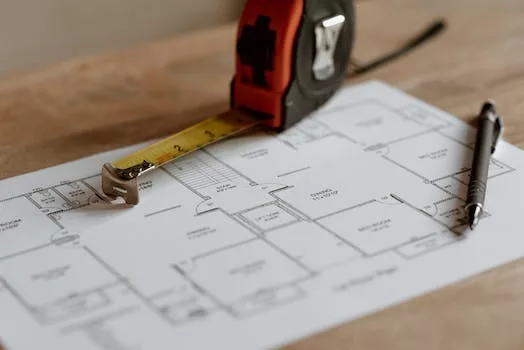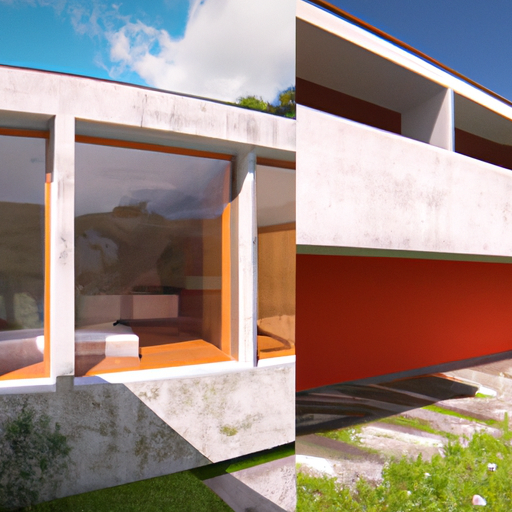Integrating Renewable Energy Sources in Architectural Design
The role of architecture in creating a sustainable home is becoming increasingly important as the world faces the challenges of climate change, resource depletion, and environmental degradation. Architects and designers are now tasked with the responsibility of integrating renewable energy sources into their designs to reduce the environmental impact of buildings and promote sustainable living. This integration not only helps to reduce the carbon footprint of a home but also contributes to the overall well-being of its occupants by providing a healthier and more comfortable living environment.
One of the most effective ways to integrate renewable energy sources into architectural design is through the use of solar panels. Solar panels can be installed on rooftops, walls, or even integrated into the building materials themselves, such as solar roof tiles. By harnessing the power of the sun, solar panels can generate electricity for a home, reducing its reliance on fossil fuels and lowering its carbon emissions. In addition, solar panels can also be used to heat water, providing a sustainable and cost-effective alternative to traditional water heating methods.
Another renewable energy source that can be incorporated into architectural design is wind power. Small-scale wind turbines can be installed on rooftops or in gardens to generate electricity for a home. These turbines can be particularly effective in areas with consistent wind patterns, and when combined with solar panels, can provide a reliable and sustainable source of energy for a home. Furthermore, the integration of wind turbines into a building’s design can also serve as a visual reminder of the importance of sustainable living and the need to reduce our reliance on fossil fuels.
In addition to solar and wind power, architects can also explore the potential of geothermal energy in their designs. Geothermal systems use the stable temperature of the earth to provide heating and cooling for a home. By installing a series of underground pipes, a geothermal system can transfer heat from the ground into a home during the winter months and remove heat from a home during the summer months. This process is not only highly efficient but also significantly reduces the need for traditional heating and cooling systems, which can be major contributors to a home’s carbon emissions.
The integration of renewable energy sources into architectural design is not limited to the generation of electricity and heating. Architects can also incorporate passive design strategies to further enhance the sustainability of a home. Passive design strategies involve the careful orientation and placement of windows, walls, and other building elements to maximize the use of natural light and ventilation. By doing so, architects can reduce the need for artificial lighting and mechanical ventilation systems, further reducing a home’s energy consumption and environmental impact.
In conclusion, the role of architecture in creating a sustainable home is crucial in the fight against climate change and the promotion of sustainable living. By integrating renewable energy sources such as solar panels, wind turbines, and geothermal systems into their designs, architects can significantly reduce the environmental impact of a home and contribute to the overall well-being of its occupants. Furthermore, the incorporation of passive design strategies can further enhance the sustainability of a home, providing a comfortable and healthy living environment for its residents. As the world continues to face the challenges of climate change and resource depletion, the integration of renewable energy sources into architectural design will become increasingly important in the pursuit of a more sustainable future.
Passive Solar Design Strategies for Energy-Efficient Homes

The role of architecture in creating a sustainable home cannot be overstated. As the world grapples with the effects of climate change and the depletion of natural resources, the need for energy-efficient homes has become more critical than ever. One of the most effective ways to achieve this is through passive solar design strategies, which harness the power of the sun to heat, cool, and light a home, thereby reducing its reliance on non-renewable energy sources. This article will explore the various passive solar design strategies that can be employed to create an energy-efficient home, and how architects can incorporate these principles into their designs.
One of the fundamental principles of passive solar design is the orientation of the building. By positioning a home to face the sun, architects can maximize the amount of sunlight that enters the building, which can be used to heat the interior spaces during the colder months. This can be achieved by placing the majority of windows on the south-facing side of the building, as this is where the sun’s rays are the strongest. In addition, the use of thermal mass materials, such as concrete or brick, can help to store the heat generated by the sun during the day and release it slowly at night, maintaining a comfortable temperature within the home.
Another important aspect of passive solar design is the use of shading devices to control the amount of sunlight that enters the building. During the summer months, when the sun is high in the sky, excessive sunlight can cause the interior spaces to become uncomfortably hot. To counteract this, architects can incorporate shading devices, such as overhangs, awnings, or pergolas, which block the sun’s rays from entering the building. These devices can be designed to allow sunlight to enter the building during the winter months when the sun is lower in the sky, ensuring that the home remains warm and well-lit throughout the year.
The use of natural ventilation is another key component of passive solar design. By designing a home with strategically placed windows and vents, architects can create a natural airflow that helps to cool the interior spaces during the warmer months. This can be achieved by placing windows on opposite sides of the building, allowing for cross-ventilation, or by incorporating vents in the roof, which can help to draw hot air out of the building. By relying on natural ventilation, homeowners can reduce their reliance on energy-intensive air conditioning systems, which can significantly lower their energy consumption and carbon footprint.
In addition to these strategies, architects can also incorporate energy-efficient materials and technologies into their designs to further enhance the sustainability of a home. For example, the use of high-performance insulation materials can help to reduce heat loss through the building envelope, while energy-efficient windows can help to minimize heat transfer between the interior and exterior spaces. Additionally, the integration of renewable energy systems, such as solar panels or wind turbines, can help to generate clean, renewable energy for the home, further reducing its reliance on non-renewable energy sources.
In conclusion, the role of architecture in creating a sustainable home is crucial in today’s environmentally conscious world. By incorporating passive solar design strategies, such as building orientation, shading devices, and natural ventilation, architects can create energy-efficient homes that harness the power of the sun to heat, cool, and light the interior spaces. Furthermore, the use of energy-efficient materials and technologies can help to enhance the sustainability of a home, reducing its impact on the environment and contributing to a greener future for all.
Green Building Materials and Techniques for Sustainable Living
The role of architecture in creating a sustainable home cannot be overstated. As the world grapples with the effects of climate change and the depletion of natural resources, the need for environmentally friendly and energy-efficient homes has become increasingly important. Green building materials and techniques for sustainable living are at the forefront of this movement, offering homeowners the opportunity to reduce their carbon footprint, conserve resources, and create a healthier living environment.
One of the primary ways in which architecture can contribute to a sustainable home is through the use of green building materials. These materials are typically made from renewable resources, have low embodied energy, and are often recyclable or biodegradable. Examples of green building materials include bamboo, straw bales, recycled steel, and reclaimed wood. By incorporating these materials into the design and construction of a home, architects can significantly reduce the environmental impact of the building process.
In addition to using green building materials, architects can also employ various techniques to promote sustainable living. One such technique is passive solar design, which involves the strategic placement of windows, walls, and other architectural elements to maximize the use of natural sunlight for heating and cooling purposes. This can help to reduce a home’s reliance on non-renewable energy sources, such as fossil fuels, and lower its overall energy consumption.
Another technique that architects can use to create a sustainable home is the incorporation of energy-efficient systems and appliances. This can include the installation of solar panels, geothermal heating and cooling systems, and energy-efficient lighting. By integrating these systems into the design of a home, architects can help homeowners to reduce their energy consumption and lower their utility bills.
Water conservation is another critical aspect of sustainable living, and architects can play a significant role in promoting this through the design of a home. This can involve the use of low-flow fixtures, rainwater harvesting systems, and greywater recycling systems. By incorporating these features into a home’s design, architects can help to reduce the amount of water that is wasted and promote the efficient use of this precious resource.
The use of green roofs and living walls is another innovative technique that architects can employ to create a sustainable home. These features not only provide insulation and reduce energy consumption but also help to improve air quality, reduce stormwater runoff, and provide habitat for local wildlife. By incorporating green roofs and living walls into the design of a home, architects can contribute to the creation of a more sustainable and environmentally friendly living space.
Finally, the overall layout and design of a home can also play a significant role in promoting sustainable living. By creating open, flexible spaces that can be easily adapted to suit the changing needs of a family, architects can help to reduce the need for future renovations and extensions, which can have a significant environmental impact. Additionally, by designing homes that are well-suited to their local climate and environment, architects can help to ensure that they are energy-efficient and comfortable to live in.
In conclusion, the role of architecture in creating a sustainable home is multifaceted and involves the use of green building materials, the incorporation of energy-efficient systems and appliances, and the implementation of various design techniques to promote sustainable living. By embracing these principles, architects can help to create homes that are not only environmentally friendly but also comfortable, functional, and aesthetically pleasing. As the world continues to face the challenges of climate change and resource depletion, the importance of sustainable architecture will only continue to grow, making it an essential consideration for homeowners and architects alike.
Q&A
Question 1: What are the key architectural design principles for creating a sustainable home?
Answer 1: The key architectural design principles for creating a sustainable home include passive solar design, energy efficiency, use of sustainable materials, natural ventilation, and water conservation.
Question 2: How does passive solar design contribute to a sustainable home?
Answer 2: Passive solar design contributes to a sustainable home by maximizing the use of natural sunlight for heating, cooling, and lighting, reducing the need for artificial energy sources. This is achieved through proper building orientation, window placement, and the use of thermal mass materials to store and release heat.
Question 3: How can architects incorporate water conservation into sustainable home design?
Answer 3: Architects can incorporate water conservation into sustainable home design by implementing strategies such as rainwater harvesting, greywater recycling, and using water-efficient fixtures and appliances. Additionally, incorporating drought-tolerant landscaping and permeable paving can help reduce water runoff and promote groundwater recharge.
Conclusion
In conclusion, the role of architecture in creating a sustainable home is crucial as it involves the integration of energy-efficient design, use of eco-friendly materials, and incorporation of green technologies. By prioritizing sustainability, architects can significantly reduce a home’s environmental impact, improve its occupants’ well-being, and contribute to a more sustainable future for our planet.


